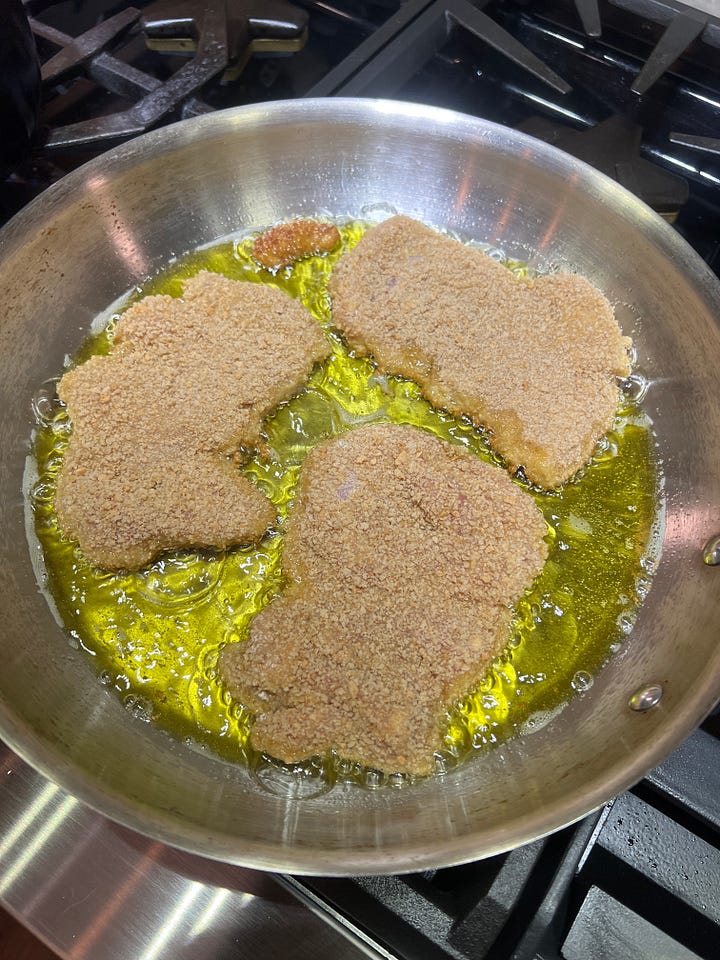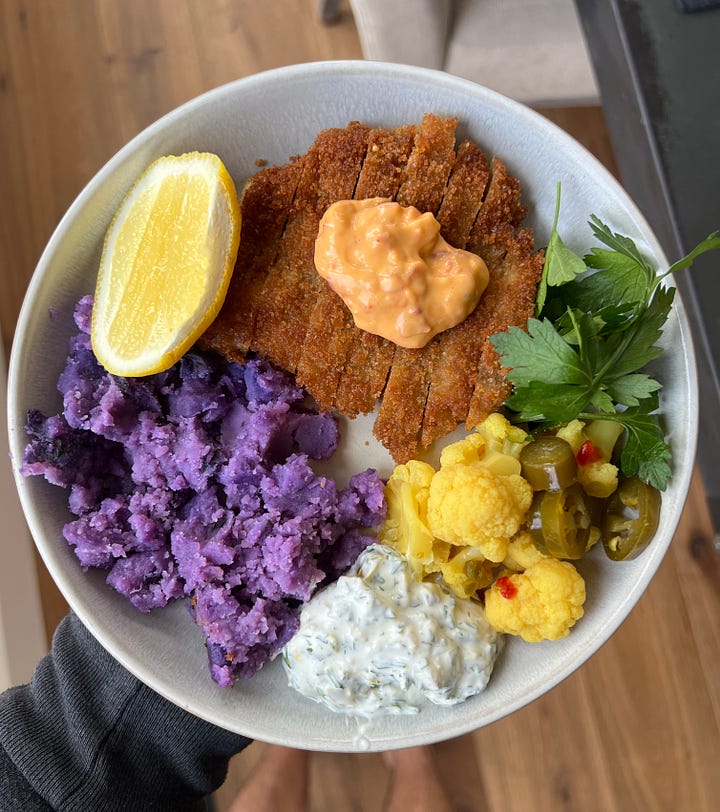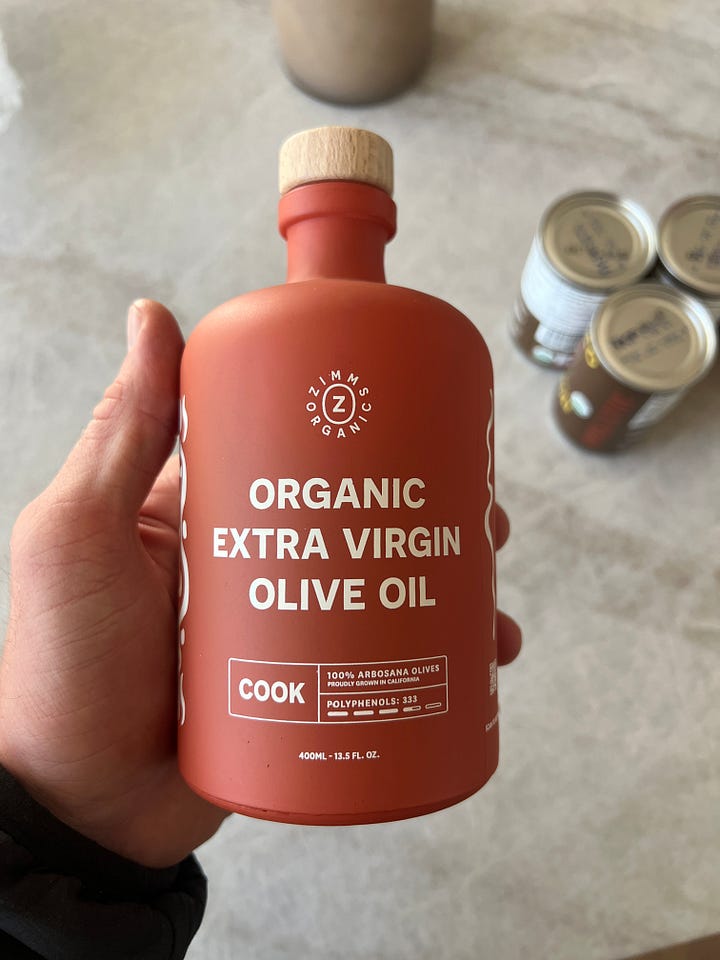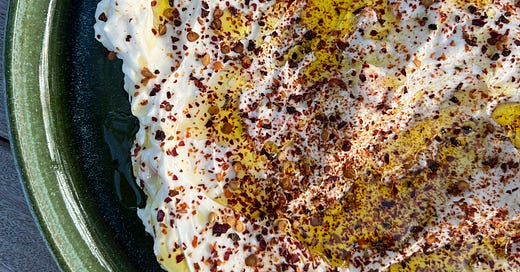Hey, everyone!
If you’re reading this issue in your browser, you’ll notice that I’ve rebranded the newsletter with a new name and look courtesy of my friend Ben Hatch. If you’re looking for quality design work, I can’t recommend him enough!
The newsletter has an updated look, but the content will stay the same— my goal is to provide a free weekly resource to help you become a better home cook. If you like this newsletter, one of the best ways you can support it is by sharing it with a friend or two who you think will enjoy it as well. And if you do, I really appreciate it!
Today’s newsletter is all about one of my all-time favorite ingredients: olive oil. It’s a permanent staple in my kitchen, and a supremely important input for cooking. I’ve done my best here to break down everything I think you need to know about olive oil— sourcing it, storing it, using it, and more. If you’re just looking for brand recommendations, skip to the end and you’ll find them.
As always, let me know if you’ve got any feedback or suggestions!
Myles
Sourcing Olive Oil
Unfortunately, not all olive oil is created equal. In fact, not everything that claims to be olive oil is even real olive oil! There’s rampant fraud in the industry— olive oil that’s blended with cheaper oils, rancid oil, lies about country of origin…the list goes on. If you want to dive into this crazy world even further, Extra Virginity by Tom Mueller is a great read.
Luckily, all of these pitfalls can be avoided by sourcing properly. I source all of my olive oil directly from brands I’ve vetted and trust. Most of the issues you’ll run into happen when buying cheap olive oil from generic brands at the grocery store. There are a lot of good brands out there that control their whole supply chain and make sure that you’re getting real, fresh oil.
Whenever possible, I prefer to buy my olive oil online. You’ll get more brand transparency and guarantees than you will in any grocery store. And because it’s shipped directly to you, you’re getting a fresher product that’s less likely to have damage from the storage and transportation process.
There are a few widely available brands that you can find in a lot of stores— California Olive Ranch and Kosterina are two I trust. But whenever possible, I like to buy my oil online for the best quality guarantees.
The Olive Oil Purchase Checklist
No matter where you’re purchasing your olive oil, use this checklist as a way to sort through your options.
Extra Virgin Grade
You should only buy extra virgin olive oil. That’s the bare minimum bar for quality. Avoid refined olive oil, virgin olive oil, or “light” olive oil.
Freshness
Buy olive oil that has a harvest date listed on the bottle. Even better if it has a harvest date and bottling date. Olive oil is a fresh product, and it does not get better with age. Aim to buy fresh oil that was harvested and bottled within the last 12-18 months. All of the highest-quality brands that are committed to transparency list this information.
Packaging
Olive oil should be packaged in dark glass (ideal) or metal packaging. Light exposure degrades the quality of olive oil, so dark glass helps prevent this. Occasionally you’ll see brands selling really fresh olive oil in clear glass bottles. If they’re shipping to you directly and the oil has been harvested within the last few months, that’s usually okay. But as a general rule of thumb, always look for a dark bottle.
Organic
Try to buy organic olive oil, if possible. Olive trees soak up whatever is in the soil, and those compounds (which are often fat-soluble) end up in the final product. If the olive trees are sprayed with a bunch of pesticides, that can be a problem. Buying organic whenever possible is the best way to avoid this.
Bonus Points
Some producers list additional information that helps indicate quality. Single-origin olive oils often have more distinctive flavors and characteristics. Some are even marked single-varietal, which means the oil comes from one specific varietal of olive, rather than a blend. Finally, some brands like Zimms Organics even list polyphenol count on the bottle, which indicates extensive testing for quality.
Storage and Shelf Life
If there’s one thing to note about olive oil storage, it’s that olive oil is a fresh product. Olive oil is not like wine— it actually gets worse with age. Even if you buy really fancy olive oil, you shouldn’t treat it too preciously. It’s meant to be used!
Generally speaking, you want to buy olive oil that’s as fresh as possible and use it within 12-18 months of its harvest date. Oxygen, light, and heat are the enemies of olive oil, so your storage should aim to keep the oil cool, sealed, and away from too much light exposure.
If I buy large quantities of olive oil, I’ll usually keep those bottles sealed in my pantry and then use a refillable spout with small amounts of oil that I keep near my stove. I like using one of these stainless steel cruets, a ceramic bottle, or even a squeeze bottle.
Just note— chefs often keep their oil in squeeze bottles. It’s quite convenient and makes usage really easy. But most chefs are going through a ton of oil in a given day, so the oil doesn’t sit around in the squeeze bottle for too long. If you are using one, take note to use small amounts and go through the oil quickly. The combination of light, heat, and plastic is detrimental to good oil over long periods of time.
Cooking with Olive Oil


I’ve often been asked whether it’s safe to cook with olive oil, and there seem to be a lot of misconceptions out there.
To be clear, you can definitely cook with olive oil. I even cook with it over high heat— roasting, sauteing, pan frying, even deep frying occasionally. As long as you're buying high-quality extra virgin olive oil, it's completely safe and also delicious.
Good-quality olive oil has a high smoke point— usually around 375℉ and often up to 410℉. Even if you’re deep frying something, you’re unlikely to need to get the oil that hot. But the other thing about olive oil is that it’s chock-full of antioxidants that protect against oxidation and degradation. Some brands (like Zimms Organics) list polyphenol count right on the bottle, so you can seek out a high-polyphenol oil if you’re planning to fry with it.
The key here is simply buying high-quality olive oil. If the olive oil isn’t good— or even worse if it’s blended with other oils— it won’t stand up well to heat. But the good stuff will. Overall, it’s actually a very stable oil compared to alternatives. If you want more info, Zimms put together a cool article showing some of the studies that have proven this.
There are other great oils that I prefer for really high-heat cooking (see the Fats & Oils Guide for a full breakdown). For example, if I want to sear meat (which means I’m using heat above the smoke point of olive oil), then I’ll usually opt for tallow or ghee. But olive oil is great for a lot of cooking and the fear around it is unnecessary if you're buying good product.
Case in point— this olive oil-fried chicken parm, which is one of my all-time favorite dishes.
Brand Recommendations


Everyday Cooking Oils
These are the two oils I use most for my day-to-day cooking.
My Favorite Olive Oils
These are the slightly fancier, highest-quality oils that I love most. They’re great for cooking or finishing/drizzling, though I usually reserve them for the latter since they taste best in their raw form.
Fancy Bottles for Gifting
A beautiful bottle of olive oil makes a fantastic gift for someone hosting a dinner party or letting you stay at their home. These are all great finishing oils that have the added benefit of beautiful and unique packaging that makes them great for gifting.
Nobleza Del Sur (Olive Oil Lovers is a great resource generally to source amazing oil from a variety of producers)
Grove and Vine (including their new collaboration with Action Bronson)
Olio Nuovo


One final note— if you love olive oil, you should try to seek out some olio nuovo. Olio nuovo (also called olio nuevo or olio novello) is the early harvest, first-press oil of the season. It’s bright green, intensely peppery, and a super unique olive oil experience.
Olive oil harvest happens in the late fall, which means now is the time of year to seek out some 2023 harvest olio nuovo. You can check with individual producers to see if they have 2023 nuovo, or check out Olive Oil Lovers for a fantastic selection from a variety of sources.
Thanks for reading this newsletter! If someone forwarded this to you, you can subscribe below.
If you like this newsletter and want to dive even deep into your cooking journey, check out 80/20 Cooking.






Really enjoy these informative deep dives. I’m just an average home cook, and lately have been most interested in digging into the basics a bit more. So learning about such a used ingredient has been very useful.
Thanks Myles! we need more people speaking about the goodness of OO... when it's properly sourced, with all the variables that you described (and some more*)
I just wanted to comment that, in your last point, about early harvest, you mentioned two attributes of the oil: green color and peppery flavor, and these are not necessarily a sign of freshness, quality or early harvest. Color and organoleptic notes are much more related to the variety and terroir. Actually, OO "sommeliers" do their tastings in dark cups to avoid being biased by the color.
That said, it's definitely important to harvest early in the season since, among other things, it should be higher in polyphenols and it will keep its freshness for longer.
PS: Harvest in the southern hemisphere starts in March/April
*I don't want to expand much more on this comment, but there are some other variables about the terroir, sustainability practices, harvesting, filtering, storing and supply chain, that play a very important role. But, in the end, if a company is transparently testing and sharing the quality and polyphenol levels, that's most of what you need to know as a consumer (along with a delivery method that keeps the quality intact as you mentioned)